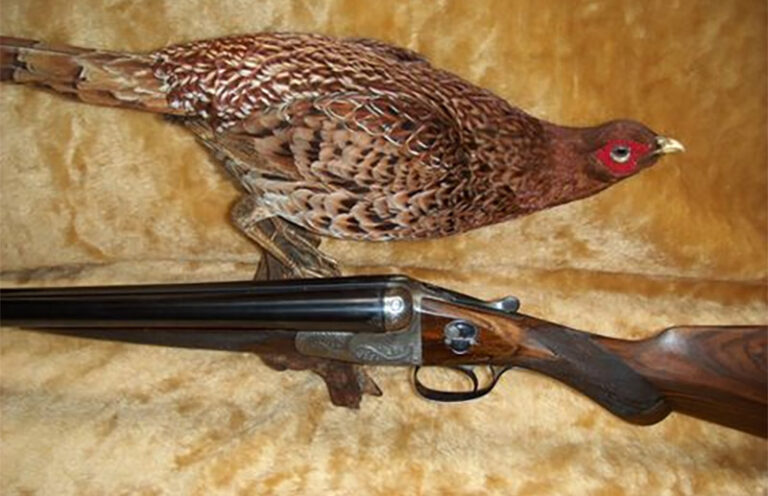
A look back at the Greener, because nothing gets a young shotgunner’s attention like touching off both barrels—simultaneously!
The first shotgun I ever fired was a 20-gauge J. C. Higgins single-barrel single shot. It belonged to the wife of a close family friend, one of two hunting and shooting mentors I had as a kid. I believe Stevens made the gun, but back then, it was marketed under the J. C. Higgins label by Sears, Roebuck and Company.
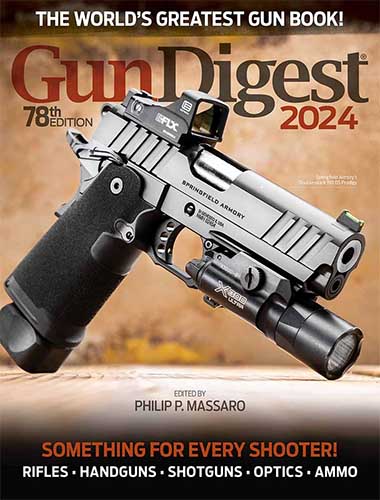
As was typical of that type of single-barrel shotgun, it was very light and gave a healthy jolt with standard loads. So, to offset the recoil, my mentor loaded a few cartridges with about half an ounce of shot and reduced powder. In short, he made .410 loads in 20-gauge hulls. I shot at a tin can about 15 yards away; it was the first time I fired a shotgun. It was a good thing that it hardly kicked since, at age 12, I wasn’t a large kid. I was kind of scrawny, about 90 pounds soaking wet!
A few months after shooting the powder-puff 20 gauge, I shot a regular 12-gauge load at a live target. I was out with an uncle, my other childhood mentor, hunting. We had been after partridge and drove to one of his “secret” spots after an unsuccessful hunt in one area. While driving, my uncle suddenly stopped and pointed at a tree about 30 yards away. A crow sat on the top branch. We exited the car, and he assembled his shotgun from its case, a W. W. Greener 12 gauge with double triggers and side safety.
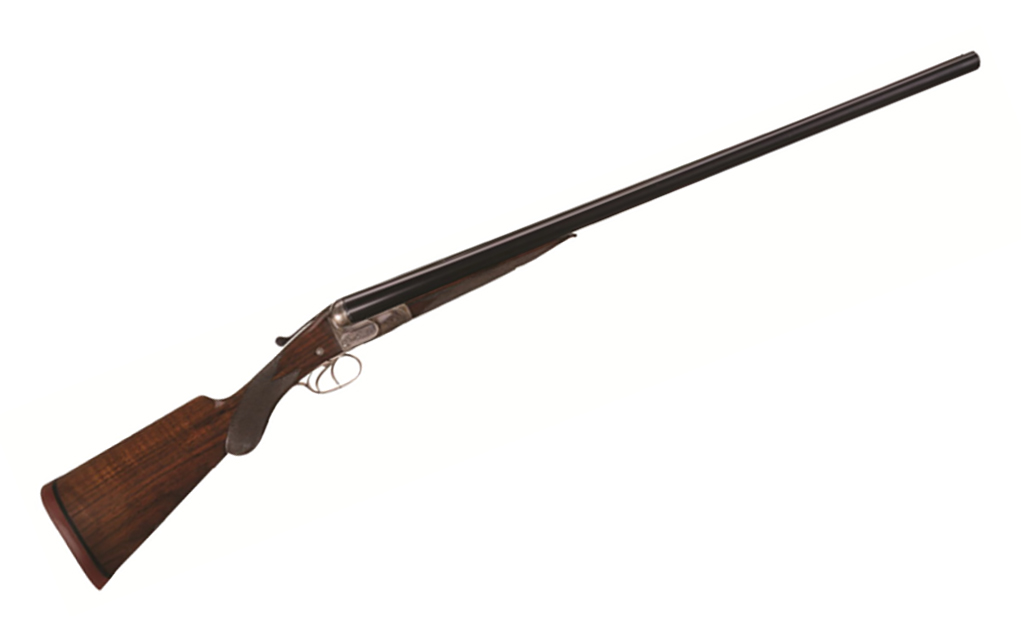
He loaded both barrels with those wonderfully aromatic waxed green paper Remington Express loads with round yellow paper stickers on the crimp marked with the shot size. He checked to ensure the gun was on safe, then handed it to me and said to aim, take it off safe, and shoot. If I missed with the first barrel and the crow started to fly off, I was to pull the rear trigger for the second barrel. He reminded me to “lead” the crow if it was flying. Eagerly, I took the gun from his hands and attempted to do as I was told. I aligned the bead on the crow and took the safety off. Then I pulled the trigger, or at least I thought I had pulled the front trigger, but apparently, I did more than that.
The shot was thunderous and almost knocked me off my feet! I missed entirely, and the crow disappeared before I could shoot again. My uncle laughed as I stood there somewhat dazed, staring at the Greener that kicked like a mule. He took the gun from me, thumbed the top lever, and popped two empties. In my excitement, I pulled both triggers at the same time. It was quite a shock, and I never repeated that mistake.
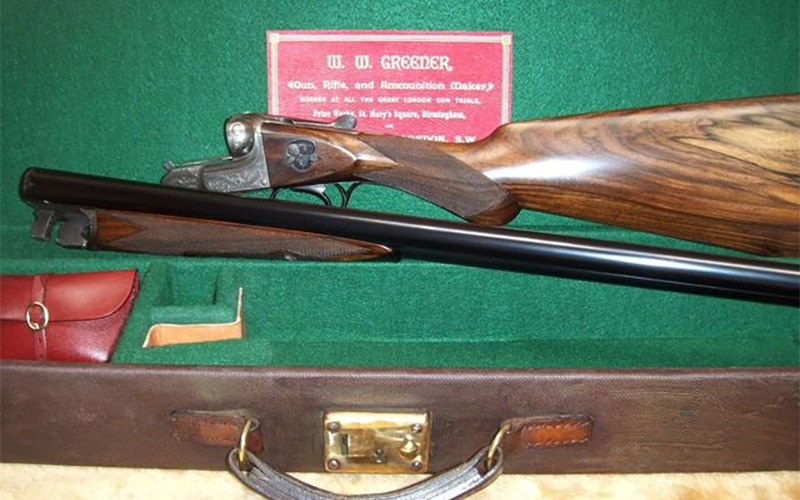
I later shot that wonderful Greener more successfully, pulling one trigger at a time. I discovered that it did not have a vicious kick at all. I often shot those mild, maroon-colored, low-base Remington Shur-Shot loads, and the recoil was minimal. It was a game gun and weighed about 61/2 pounds, the same as my uncle’s other game guns. My uncle was a wealthy man and a hunting fanatic who owned many shotguns, all 12 gauges. As far as he was concerned, the 12 gauge was the only bore size worth shooting. He owned a successful company, and he concentrated on hunting for about four months each year during the hunting season. During that time, he rarely visited his office except in emergency cases, leaving the company business in the hands of his deputy.
He used to jokingly say that if Clark Gable, the reigning “King of Hollywood” at that time, could take off during hunting season, so could he. (Gable was famous for having a clause in his contract with MGM Studio that specified he would not make any movies during hunting season.) My uncle may not have been the “King of Hollywood,” but he had his priorities straight.
It was from this uncle that I learned about fine English and European doubles. He had a Purdey, a Holland & Holland, and some fine Belgian guns, including a Jules Bury, which he said was as good as any English Best Gun. However, despite all these guns, it was apparent that he preferred to shoot the Greener. The two guns he shot the most were the Greener and a Belgian boxlock “Guild Gun” with no name, which he told me Francotte made. He didn’t shoot his Best Guns with finer pedigrees as much.
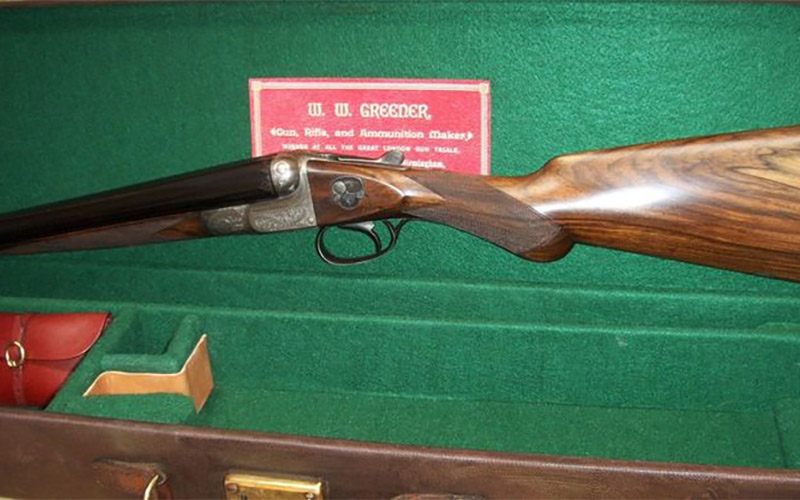
Many years later, he surprised me with his generosity and presented me with one of his prized guns, the Holland & Holland. It was a beautiful Royal Model, and I was grateful for this unexpected and priceless gift, but to be honest, I secretly wished it had been the Greener instead. There was something about that old Greener that made it special. The Holland & Holland was a superb gun and felt like a magic wand in my hands, and it came in a fancy oak and leather trunk case. But I had never shot it before and hadn’t developed the connection and feeling I had for that old Greener. The Greener felt solid yet light and like magic, at least for me. That was many years ago, and much time had passed since that Greener gave me such a wallop.
I still remember that Greener very well. Its trigger guard tang, worn white, had the serial number followed by “Grade FH25” engraved. The bluing on the barrels was thin, especially in front of the forearm, where it was held by the forward hand. The color casehardening on the receiver was gone entirely, making the receiver appear to have a pickled gray finish. The barrel flats were stamped with Birmingham proof marks and 2¾ inches and 1¼ ounces. Both barrels were stamped “choke,” but my uncle told me that the left barrel was “half choke” while the right was “quarter choke.” I knew, from reading articles about shotguns, that “half choke” meant modified and “quarter choke” was improved cylinder. The stock, though not fancy, was attractive with lightly grained wood and had that distinctive Greener trademark rounded Prince of Wales grip, which was almost a straight grip, and it had a horn buttplate. The wood finish had numerous scratches and minor dents but was otherwise still in good shape.
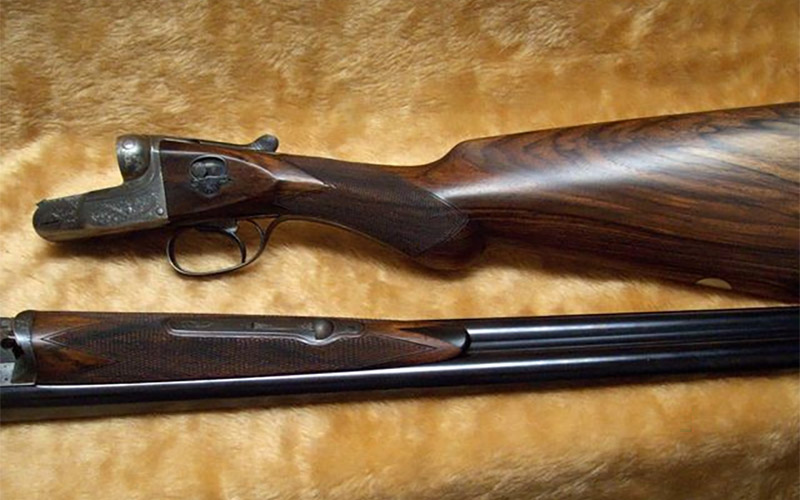
I cleaned the gun thoroughly each time after shooting and lightly oiled everything. I would then slip the barrels with its forearm and the receiver with its stock into their frayed, oil-stained red flannel cloth sleeves. Then, I would put the two parts into the much worn and scuffed old leather leg o’ mutton case in which it was kept. The top lid of the case was stamped “W. W. Greener, Ltd” with an image of an elephant, a Greener trademark. My uncle kept his other guns in the cabinet, but there was no space for all his firearms, so the Greener and several others stayed outside. Besides, he shot the Greener the most, so he kept it handy.
Through the years, I have owned a couple of Greeners. I once had a worn-out Empire-Grade Greener that had belonged to an old duck hunter who shot it every duck season for over half a century. I got the gun more for sentimental reasons than actual use, and it was pretty beaten up, badly off-face, and its side safety did not work. It had consumed its share of heavy loads, perhaps too many. I kept it for a while, never actually shooting it before trading it for something else. I also had a very early Damascus-barreled high-grade Greener that was a nice gun and proofed for 23/4-inch loads, but it was not quite to my liking, so it also left my house.
My current Greener is an FH35, a grade higher than that old one I shot as a kid. According to Greener records, it was made “between the wars” for sale in America with its factory single selective trigger and 26-inch barrels. It is a light upland gun, a few ounces lighter than my uncle’s old Greener, and being a grade higher, slightly finer with more engraving and better wood on the buttstock. It, too, has the shallow, rounded wisp of a Prince of Wales grip on a very nicely grained stock with dark streaks.
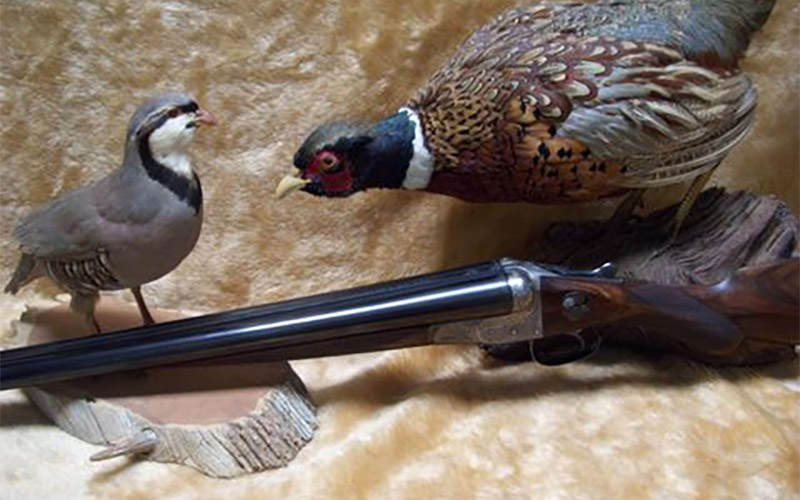
I suspect it was initially purchased by a grouse and woodcock hunter or a bobwhite enthusiast. It came to me in an old, restored canvas and leather Brady case. I don’t know whether the case was initially purchased with the gun, but the shotgun is nicely fitted to the case, which has been relined with new fabric.
The Greener I own today is not a Best Gun. It is a Birmingham boxlock, albeit a very lovely graded model. But, just as my uncle of long ago seemed to prefer his old Greener over other, more costly and pedigreed guns, I too like this Greener a lot. It is choked cylinder in the right barrel and modified in the left, an excellent combination for upland gunning. I haven’t shot it much, not as much as I once shot my uncle’s old FH25. But I did take it out after quail and dove a few times, and it did its job perfectly, as long as I did my part.
Since my introduction to shotguns with my uncle’s old Greener gave me such a violent jolt, I have always been partial to Greener shotguns. Some dislike the Greener cross-bolt, considering it an unnecessary appendage. Others don’t like the side safety. Yet others claim Greeners are nothing but Birmingham “working guns,” not as finely made as London guns. I find it to be quite the opposite. In my experience, Greeners are as well made as any London gun. Granted, their basic models, like the Empire Grade, are not as finely finished as the London “best guns,” but they don’t cost the price of a small house!
Like the Royal Grade, the top-grade Greener boxlocks are as finely made as any London Best sidelock. And Greener made very fine sidelocks that are as good as the London counterparts and cost as much. However, the boxlock gave Greener worldwide fame; the proprietary boxlock action called “Facile Princeps” with its famous Greener top lock and side safety.
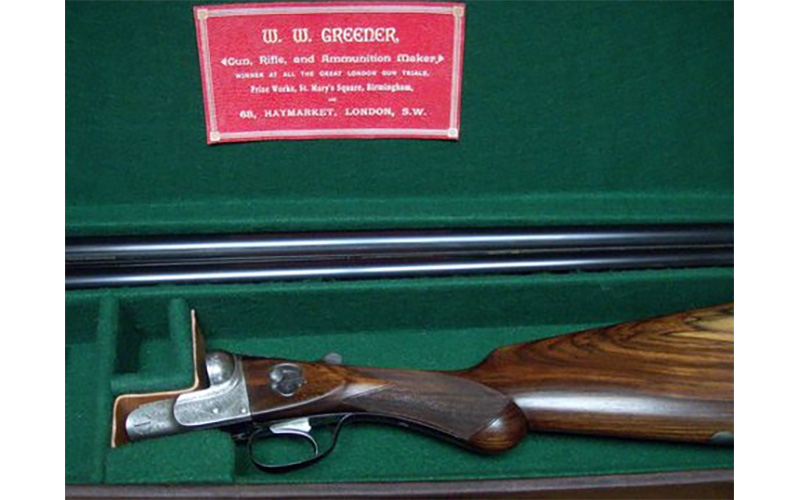
A Greener will last as long as any London gun, maybe even outlast it. Not surprisingly, when Winchester held a torture test for its Model 21, shooting thousands of rounds of unreasonably heavy overloads, all other guns, including London Best Guns, broke down early on. Only the Greener hung on for a while longer, although it couldn’t keep up with the tank-like, overbuilt Model 21.
But my fondness for the Greener is not based on its strength. It is simply that it was a Greener that I shot first as a kid. So for me, a Greener will always hold a special place.
Editor's Note: This article is an excerpt of Gun Digest 2024, 78th edition.
Our Best Advice on Shotguns: Guides and Tutorials
- Best AR Shotgun – Best Picks And Buyer’s Guide
- 410 Pump Shotgun Reviews – Best .410 Bore Shotguns
- Affordable Over Under Shotguns – A Buyer's Guide
- Best Semi Auto Shotguns – Scatterguns For The Field And Defense
- Best Double Barrel Shotgun Guide
- 8 Gauge Shotguns – Exploring Their Role in Shooting History
- Top Tactical Shotguns Our Picks for the Best Models
- History of Lever Action Shotguns
- Top Rated Pump Action Shotguns – A Buyer's Guide
- Best Bullpup Shotguns for Home Defense

Next Step: Get your FREE Printable Target Pack
Enhance your shooting precision with our 62 MOA Targets, perfect for rifles and handguns. Crafted in collaboration with Storm Tactical for accuracy and versatility.
Subscribe to the Gun Digest email newsletter and get your downloadable target pack sent straight to your inbox. Stay updated with the latest firearms info in the industry.

![Best Concealed Carry Guns In 2025 [Field Tested] Wilson Combat EDC X9S 1](https://gundigest.com/wp-content/uploads/Wilson-Combat-EDC-X9S-1-324x160.jpg)


![Best 9mm Carbine: Affordable PCCs [Tested] Ruger Carbine Shooting](https://gundigest.com/wp-content/uploads/Ruger-Carbine-Shooting-100x70.jpg)
![Best AR-15: Top Options Available Today [Field Tested] Harrington and Richardson PSA XM177E2 feature](https://gundigest.com/wp-content/uploads/Harrington-and-Richardson-PSA-XM177E2-feature-100x70.jpg)
